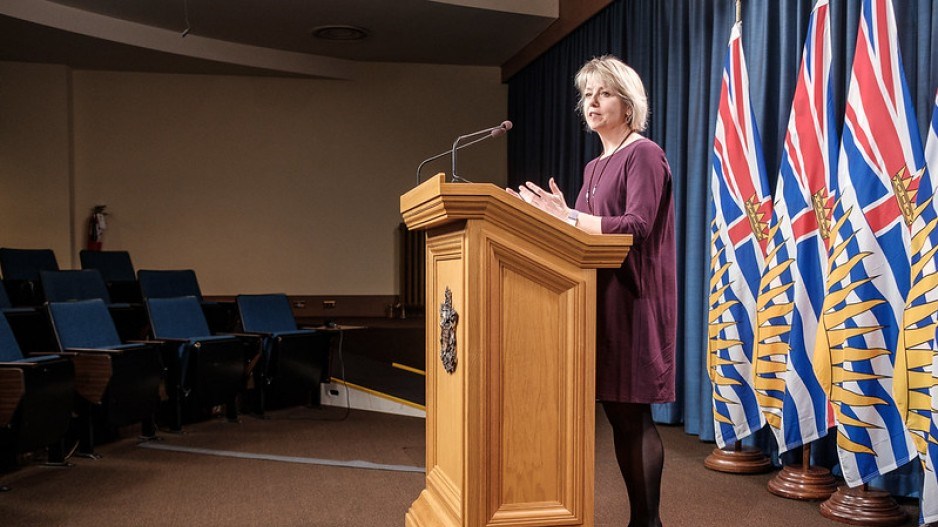British Columbia has 29 new cases of COVID-19, for a total of 1,203, and three new deaths, provincial health officer Bonnie Henry said Saturday.
“The risk remains very high for us right now in B.C.,” Henry said. “This is our time when we need to keep our firewalls strong.”
Those numbers include 149 hospitalizations with 68 people in intensive or critical care.
The number of COVID-19 infections broken down by health region are:
• 554 in Vancouver Coastal Health;
• 424 in Fraser Health;
• 76 in Island Health;
• 128 in Interior Health; and
• 21 in Northern Health.
There are 704 people that the government considers to have fully recovered.
Henry said testing is moving rapidly now.
“There’s not a large backlog of people waiting for tests,” she said.
But, she cautioned, over the next two weeks B.C. will see how well precautionary measures such as handwashing, social distancing, travel bans and closing schools have worked.
“After Easter, we’ll have a much better idea of where we are,” Henry said.
Henry said there are now 23 outbreaks of infections in long-term care homes, two of them very serious.
Those homes remain a focus for officials, she said.
Henry said an advisory committee helmed by Dr. David Patrick of the B.C. Centre for Disease Control and the University of British Columbia is making progress on research into fighting the infection.
As well, $2 million has been provided to the Michael Smith Foundation for Health Research to trace how the virus is transmitted, work that would inform modelling, Henry said.
And work toward creating a vaccine is continuing both in B.C and in 25 initiatives around the world, Henry said.
Henry said people not showing symptoms while being infected (or asymptomatic) are not the main driver of infection.
“The vast majority of transmission is when people are mildly ill,” she said. “It’s the early symptoms that people may not notice. We need to be cautious about that.
The highest risk category appears to be people in their late 30s and early 40s, Henry said. That’s the age group many health workers fall into, she added.
She said very few people under 19 are showing signs, although one youth has been hospitalized.
Questioned about grandparents looking after youngsters, Henry said it’s important that people’s social connections remain limited so family members don’t introduce the virus to others.
Health Minister Adrian Dix said Friday there are 4,399 empty hospital (acute care) beds in the province. The province’s move to suspend what it considers “elective” or “non-essential” surgeries has helped hospitals reduce their cumulative occupancy rate for beds to 59%, down from the usual occupancy rate of about 103%.
Dix said 54.3% of the province’s critical-care hospital beds are occupied. That low occupancy is intended to help the province have capacity if there is a surge in hospitalizations from the virus that causes severe pneumonia and has an estimated 15% fatality rate in seniors.
Emergency room visit numbers are also down. On Thursday, B.C. hospitals counted 3,117 visits, which is down from 6,559 on March 10, Dix said.
Dix also revealed new data for cancelled “elective” surgeries B.C.-wide between March 17 and April 2: 11,276. Of those, 1,208 were hip or knee replacements.
@jhainswo




